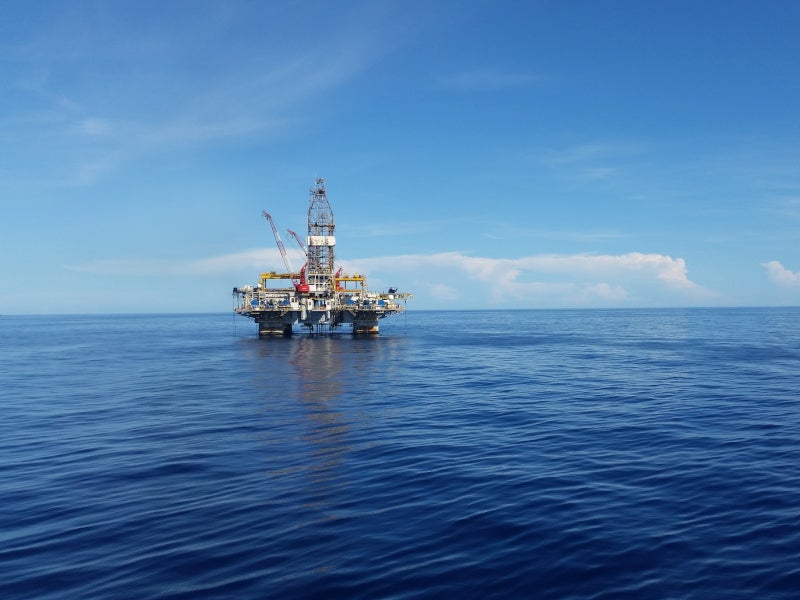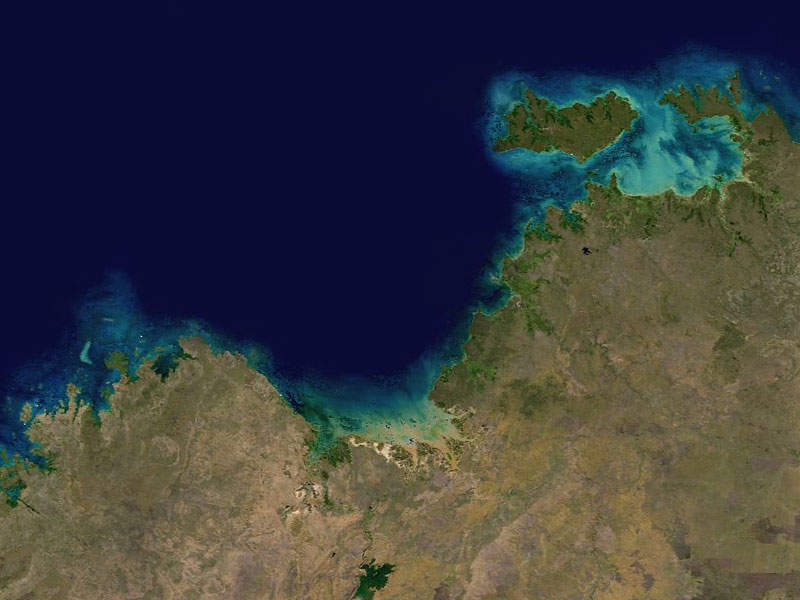Barossa project is a gas and condensate field in the Bonaparte Basin of the Timor Sea offshore Australia, in a water depth between 130m and 350m.
The Barossa field is being developed along with the nearby Caldita field under the Barossa offshore development project.
The field is operated by Santos, an oil and gas company based in Australia, with a 50% working interest in it. Other partners in the field are SK E&S, an energy company based in Korea, with a 37.5% interest, and JERA, a power company based in Japan, which holds the remaining 12.5% interest.
The proposal for the development of the field was accepted by the National Offshore Petroleum Safety and Environmental Management Authority (NOPSEMA) in March 2018. The final investment decision of $3.6m on the project was made in March 2021.
The Environment Plan (EP) Revision 3 of Barossa drilling and completions was approved by NOPSEMA in March 2022.
First gas from the field is expected to be achieved in the first half of 2025 with an estimated annual production rate of 3.7 million tonnes (Mt) of liquefied natural gas and 1.5 million barrels of gas.
The project is expected to have a production life of approximately 25 years.
Location
The field is located within petroleum permit NT/RL5 in the Commonwealth waters, 300km north of Darwin in the Northern Territory. It is located approximately 140km north of Seagull Island.
Barossa and Caldita discovery
Barossa was discovered in 2006 with the drilling of the Barossa-1 exploration well to a depth of 4,310m.
Two drill stem tests were conducted on the well, which confirmed the presence of gas. One test witnessed a flow rate of 30.1 cubic feet a day, while the second test witnessed 0.8 million cubic feet a day.
The Caldita field was discovered in 2005 by the Caldita-1 well and subsequently appraised by the Caldita-2 well in 2007.
Appraisal on Caldita-Barossa
The Barossa field has been appraised by a total of five wells. The first three wells, Barossa-2, Barossa-3 and Barossa-4, were part of a three-well appraisal programme that was completed in 2015.
Barossa-2 struck 88m of net pay in the Upper Elang, Lower Elang and Plover reservoirs, while Barossa-3 encountered 104m of net pay and Barossa-4 further confirmed the potential of the field.
A second appraisal programme consisting of two wells, Barossa-5 and Barossa-6, was completed in June 2017. The two wells confirmed reservoir productivity and provided critical data for field development planning.
Barossa-6 struck gas and condensate in the Elang reservoir located between depths of 4,103m and 4,144m. Tests conducted on the well resulted in a flow rate of 65 million metric standard cubic feet (Mmscf) a day.
Barossa project development details
The field will be developed with a permanently moored floating production storage and offloading (FPSO) facility, a subsea production system, supporting in-field subsea infrastructure, the gas export pipeline and the Darwin Pipeline Duplication (DPD).
Plans include drilling up to eight subsea wells in the Barossa field, with six wells positioned across three drill centres and contingency measures for an additional two wells. Gas and condensate extraction from the wells will be facilitated through the subsea production system, followed by transportation to the FPSO facility via a network of subsea infrastructure.
A fibre-optic cable between the FPSO and Darwin will be laid to enable remote operation of the facility.
The initial processing will take place at the FPSO facility, where the natural gas, water and condensate extracted from the Barossa field will be separated. The dry natural gas will then be transported via the gas pipeline for further processing onshore at the existing Darwin liquified natural gas facility operated by Santos. The condensate will be transferred from the FPSO to dedicated tankers for export.
FPSO details
The M350 hull-based FPSO measures 350m long, 64m wide and 33m deep. The hull is planned to be built at Dalian Shipbuilding Industry and will be moored using RapidFramework® design.
The FPSO has a total cargo storage capacity of 2.2 million barrels. It will have the capacity to process up to 800 million metric standard cubic feet per day (Mmscfd) of gas and a design capacity of 11,000 barrels per day of condensate. It will also store condensate for periodic offloading.
It features standardised living quarters for 160 people, a submerged cargo pumping system, Davit-launched or free-fall lifeboats and a helideck with or without helicopter parking. Its topside deck area is 20% larger than standard very large crude carriers’ tankers.
Darwin pipeline duplication details
Santos proposed to develop and manage the DPD project, aimed at facilitating the transportation of gas from the Barossa gas field in the Timor Sea to the DLNG facility. The gas pipeline will span approximately 100km in Northern Territory waters, replicating a portion of the existing Bayu-Undan pipeline, and incorporate a shore crossing at Wickham Point within the Greater Darwin area.
The final investment decision for the development of the DPD pipeline was made in August 2022. The decision entails the extension of the Barossa GEP to the DLNG facility and enables the conversion of the current Bayu-Undan to Darwin pipeline to support carbon capture and storage (CCS) initiatives.
The proposed Bayu-Undan CCS project holds the capacity to capture and store approximately 10 million tonnes of carbon dioxide (CO₂) annually.
Energy offtake details
In December 2020, Santos signed a sales and purchase agreement with Diamond Gas International, a subsidiary of Mitsubishi, to supply 1.5Mtpa of LNG [liquefied natural gas] from the project for ten years.
JERA will offtake approximately 0.425Mtpa of LNG from the field.
Financing
The project secured $1.15bn of debt financing from a syndicate of nine international banks: ABN Amro, Clifford Capital, Cooperative Rabobank, the Korea Development Bank, Natixis, Oversea-Chinese Banking, Sumitomo Mitsui Banking, UFG Bank and the United Overseas Bank, for the construction of the FPSO in August 2021.
The project also has financial support from the Export-Import Bank of Korea (Kexim) and K-Sure (Korea Trade Insurance).
Contractors involved
BW Offshore, a floating production services provider, secured a ten-year lease to operate the Barossa FPSO in March 2021, handling engineering, procurement, construction, installation, and operation. Subcontractors include SK Oceanplant, a shipbuilding company, for hull fabrication, NOV APL, an offshore technology service provider, for the submerged turret production system, Dyna-Mac Engineering, a construction company, for topside modules, and FG Industry, an offshore engineering company, for detailed engineering.
Subsea 7, an offshore engineering company, manages transportation and installation of subsea infrastructure.
Allseas, a pipelay and subsea construction company, provides engineering, procurement, transport and installation for the gas export pipeline, with Van Oord, a marine contractor, and DEME, an offshore contractor, handling trenching and pipe pull operations.
Shawcor, a material sciences company, provides coatings for the pipeline. Technip FMC, an energy technology company, supplies the subsea production system.
MODEC International manages FPSO engineering, procurement construction and installation, preceded by a front end engineering design (FEED) contract. A consortium of TechnipFMC and Samsung Heavy Industries worked on the FEED for the FPSO. MODEC International also held a FEED contract for the FPSO. INTECSEA, a subsidiary of Worley Parsons Group, was awarded a FEED contract for the subsea infrastructure.





